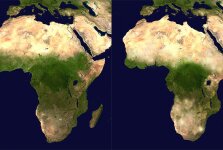It is a wildlife sanctuary for almost every creature one can find on the African soil, yet its beauty has not received the attention it deserves from local and foreign tourists.The 23-year-old Udzungwa Mountains National Park (UMNP) covers an area of 1,990 square kilometers and its name is probably a linguistic mismatch possibly by the Germans in reference of the word “Wasungwa”, one of the tribes who live on the slopes of the mountains.
It is located 60 km south of Mikumi National Park along the Mikumi-Ifakara road and about 380 km from Dar es Salaam, Tanzania’ s commercial capital.It was declared a national park in 1992 by Prince Bernhard of Lippe-Biesterfeld of Netherlands, the founder of World Wide Fund (WWF).
The park has many unique and endemic plants, mammals, birds, amphibian, reptiles and butterflies that enrich its status.
This is what makes it one of the most important parks in Tanzania.
Apart from other tourist attractions, the park is well-known for six primate species which were recorded, five of which are endemic.
The Iringa Red Colobus and Sanje Crested Mangabey can not be seen anywhere else in the country.
“The mountains are perhaps the most important site in Africa for primate conservation,” says Happiness Kiemi, the tourism promotion officer of the park.
It is also one of Tanzania’s key sanctuaries of birds as it embraces more than 400 species from the lovely and easily located green-headed oriole to more than a dozen secretive Eastern Arc endemic birds.

Despite all the richness in biodiversity and the gorgeous physical outlook, the park has not yet attracted a reasonable number of tourists consistent with its place in global tourism.
With the tourism sector ranked the third after mining and agriculture in the importance of the country’s economy, the Tanzania National Parks (Tanapa), the management authority of all the 16 national parks across Tanzania, is hopeful that southern Tanzania’s tourist sites like UMNP can change the status quo.
Comparisons with a smaller park in northern part of the country do not make any good reading for Tanzania as far as income generation is concerned.
For instance, Lake Manyara National Park of roughly 330 square kilometers, which is much smaller than UMNP, attracts more than 130,000 foreign tourists – 10 per cent of Tanzania’s annual tourist arrivals.Surprisingly, UMNP only boasts of 7,500 to 8,000 foreign tourists per annum, the number of which is very small.
Additionally, the park enjoys peace with beautiful environment, climate, as well as friendly people that could be a key in promoting tourism to unprecedented levels.
Kiemi describes the area as unique and there are ornithologists who think that the park is an avian wealth.
“There are so many things to do once you get into the park and one of them is a two-hour hike to the waterfall for camping safaris, bird watching, game drives and game viewing,” she says.
“As park management authority, we have tried to create trails that make visitors ramble to Sanje and Msolwa waterfalls and the more challenging two nights Mwanihana trail that leads to high plateau with panoramic views surrounding sugarcane plantation and the highest point in the Eastern Arc ranges,” she says.
“Our interest is to ensure that all tourist facilities are improved, so that more tourists will come here and enjoy the nature,” she says.
Source




